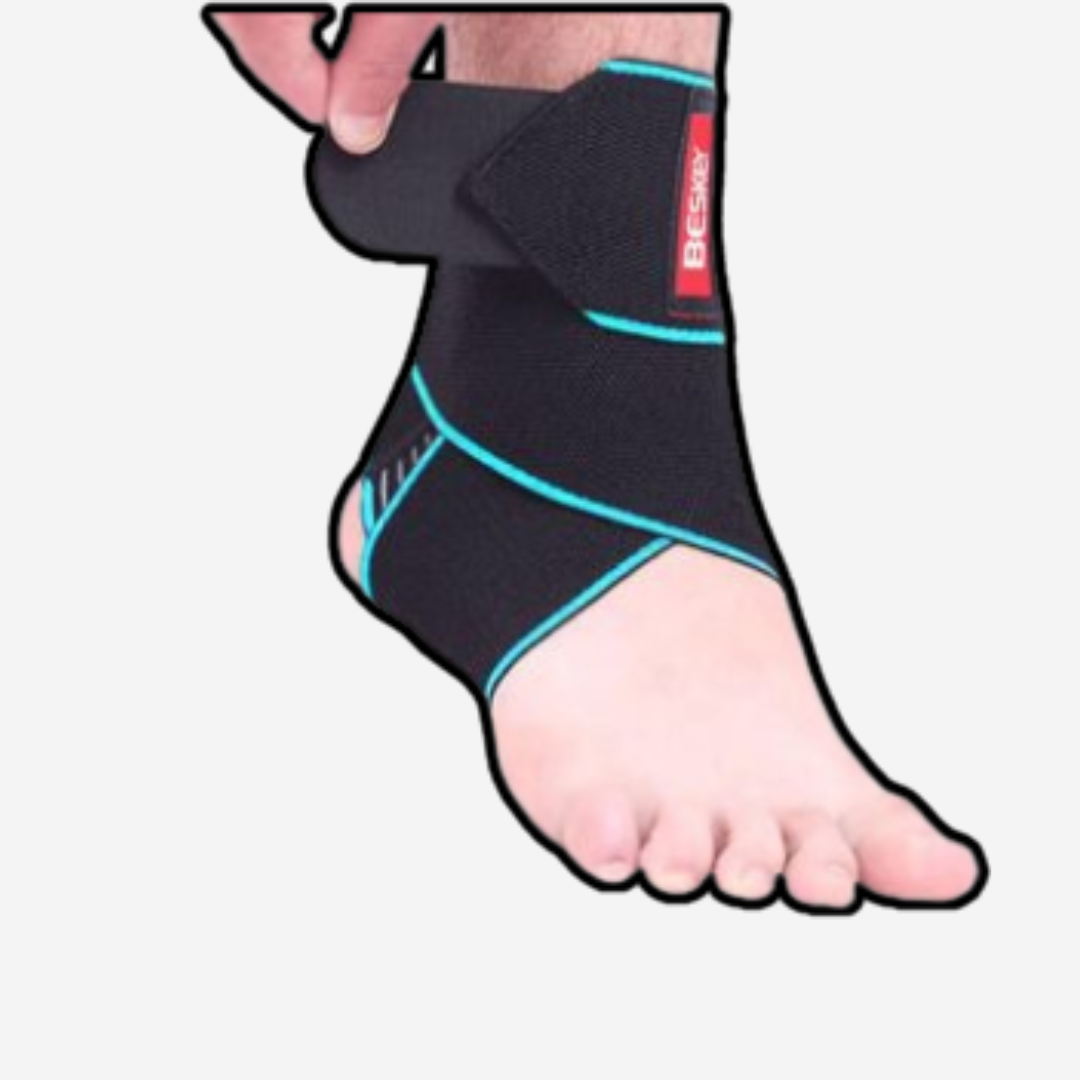The Best Ankle Braces: Your Guide in 2025

Are you suffering from ankle injuries like sprains or arthritis? Then you should require the best ankle braces, which provide good support for your ankle joint, may remove your ankle sprain, and may make you feel free from the irritation of your ankle sprain.
Ankle braces are used to manage conditions such as ankle sprains, arthritis of the ankle, and ankle tendonitis. It alleviates the pain; it permits your movement at the ankle joint. If you buy an ankle brace for your ankle injuries from an online store or your nearby drugstore, it is crucial to know what types of ankle braces are available to you, the benefits and drawbacks of each type, and what they can be used for.
By understanding their pros and cons, you can easily know the types of the best ankle braces that will suit your needs. Only the best ankle braces should be used since they offer comfort during work, while at work, or while playing any games. Also, when there is some injury, it is useful to go to a doctor, just as it is good when there is some pain. Different types of ankle braces are explained below, as well as in the table for your inspection.
Comparison Table of Best Ankle Braces
The primary types of ankle braces are briefly summarized in this chart to help you decide which one could be best for you.
| Ankle Brace Type | For Best | Support Level | Key Features |
| CompressionBrace | Mild sprains, arthritis, daily support | Mild | Lightweight, breathable, all-day wear |
| Lace-Up Brace | Mild to moderate sprains, sports | Moderate | Adjustable laces, fit inside shoes |
| Hinged Brace | Moderate to severe sprains, active sports | Moderate to High | Hinged sides prevent side-to-side rolling. |
| Rigid Brace | Severe injuries, fractures, post-surgery | Maximum | Hard plastic, Velcro straps, full stability |
| Soft Brace | Minor support, daily comfort | Mild | Lightweight and flexiAir Bracele |
| Air Brace | Swelling, minor sprains | Moderate | Expandable air cells, customizable support |
Why might they need the best ankle braces?
Braces that go around the ankle are good general support for those with pain, weakness, or the injured upper part of the foot. Here’s why they’re worth considering:
- Injury Recovery: An ankle support can stabilize the joint, enhance the position, and help to recover from such conditions as a sprain or fracture more easily.
- Pain Relief for Arthritis: Some ankle braces come with warmth and compression that will, in one way or another, make the arthritic feel slightly less painful.
- Preventing future injuries: An ankle brace is good for the person who is on his or her feet most of the time or who seems to tend to twist his or her ankle to avoid future twists.
Types of Best Ankle Braces and their Pros and Cons
Each type of ankle brace offers different levels of support and is tailored to specific needs. Here’s a closer look at the six main types of ankle braces.
1. Compression Brace
- Ideal for mild sprains, arthritis, and daily support
- Support Level: Mild
- Features: lightweight, breathable, stretchy material
Compression braces are designed to provide gentle support, reducing swelling and promoting circulation. They’re great for minor injuries or arthritis and can be worn comfortably throughout the day. Made from breathable, elastic materials, these braces fit easily under shoes and allow for normal ankle movement, making them a popular choice for daily wear.
Pros
- Comfortable
- Helps reduce swelling and provides warmth
- Fits easily in shoes
Cons
- Not suitable for serious injuries
- Limited support for high-impact activities
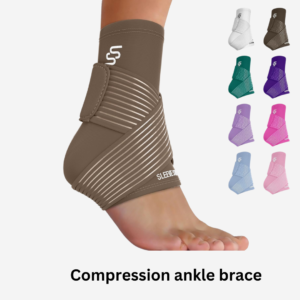
2. Lace-Up Brace
- Ideal for grade one to two injuries: hobbling, sports
- Support Level: Moderate
- Features: Lace-up straps for a comfortable yet well-fitting shoe; semi-rigid support.
Compression braces are a bit more advanced than simple sleeves, as they are warm to the ankle area and come with straps that are laced up. Due to the lace-up design, there is also some control over the tightness, controlling movement from side to side while allowing some movement. This makes them suitable for use by athletes or anybody who needs to be mobile and suffers from mild health complications, and they can be worn enclosed in most shoes.
Pros
- Customizable fit with laces
- Holds up more support than a compression brace
- Suits sport and moderate conditions and injuries
Cons:
- Putting on is a process that requires slightly longer time than other everyday wear clothes.
- It may appear a little stuffy to be worn during the day.
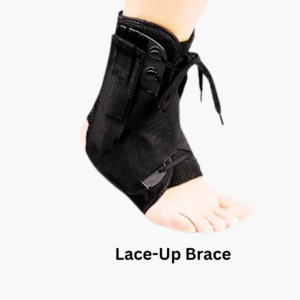
3. Hinged Brace
- Ideal for moderate to severe sprains and high-impact sports
- Support Level: Moderate to High
- Features: Hinged sides that prevent rolling, padded for comfort
Hinged braces are designed for those who need extra stability without losing flexibility. The hinges prevent side-to-side rolling but allow for natural up-and-down movement, making them ideal for sports and recovery from more serious injuries. Hinged braces are usually padded for comfort and are secured with Velcro straps for a snug fit.
Pros:
- High stability without sacrificing mobility
- Suitable for high-impact sports
- Comfortable padding for longer wear
Cons:
- Bulkier than compression or lace-up braces
- It may not fit in all shoes.
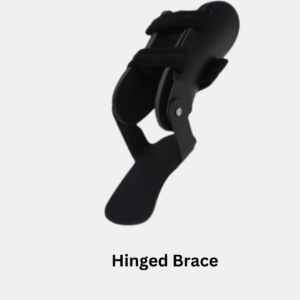
4. Rigid Brace
- Ideal for trauma, broken limbs, surgery, and postoperative care
- Support Level: Maximum
- Features: Raised hard plastic shell with adjustment straps attached by Velcro.
Stiff stays are the most protective and are typically recommended for the most significant diagraphic injuries, such as fractures or post-surgical uses. They are molded of hard plastic material; they allow almost no motion at all, so your ankle will remain firmly in place. Partial dentures are more often known as ‘rigid,’ and doctors usually prescribe these, which are normally for short-term wear only by patients who are recovering from other operations.
Pros
- Provides maximum stability and support
- Essential for severe injuries and recovery
- Protects against further injury
Cons
- Very bulky and not suitable for all-day wear
- Limits natural ankle movement
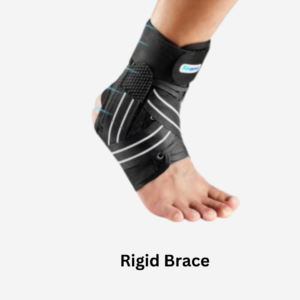
5. Soft Brace
- Ideal for moderate support, ordinary support
- Support Level: Mild
- Features: Soft, flexible fabric
Soft braces are for when you need some support but you don’t want something too big. They are useful for anyone who has a small amount of pain or for those who need slight support for their daily tasks. These are flexible braces that are designed from soft materials that are light and do not cause any skin irritations; therefore, they can be worn all day.
Pros
- Lightweight and comfortable
- Allows full range of motion
- Suitable for everyday wear
Cons
- Lack of incentives to support physical activities or accidents.
- Less stability than other brace kinds
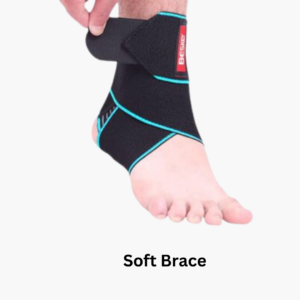
6. Air Brace
- Ideal for managing inflammation, slight twists and turns, and early-stage injuries
- Support Level: Moderate
- Features: Inflatable air cell with customized compression
Air braces utilize air cells to give adjustable constriction about the ankle. They’re particularly beneficial in managing inflammation after an injury because you can regulate the amount of pressure applied effortlessly. Air braces are usually worn when the affected limb is at its worst and when it has recently suffered a sprain or a mild injury.
Pros
- Customizable compression for targeted support
- Lightweight and comfortable for short-term use
- Great for managing swelling
Cons
- Requires occasional adjustments to air levels
- Limited support compared to rigid or hinged braces
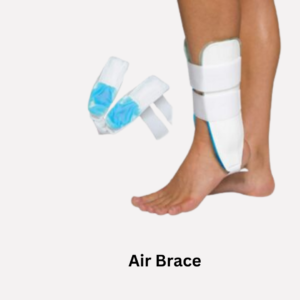
Conclusion
Factors to consider when selecting the most appropriate and best ankle brace Its undergoing depends on the following factors: For mild strains or arthritis, a figure-of-eight bandage or a soft band may be sufficient. For moderately severe to severe sprains, a lace-up or hinged brace may be recommended. In cases of severe breaks or where the patient will need help after surgery, a rigid brace might be needed. Take into account its comfort, size, and support level before making a decision, but they should consult the doctor in case of the chief injury. The well-fitting ankle brace certainly helps you to be more mobile and get back to your activities without any hesitation.

